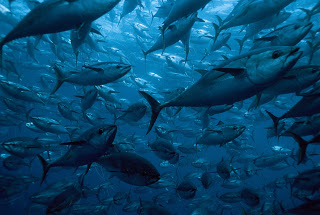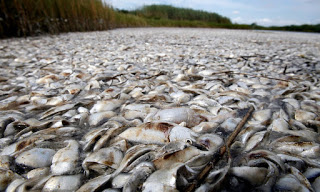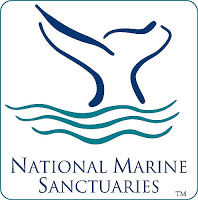 The United Nations diplomats have started talks to protect the high seas. The high seas equate more than half of our oceans and are beyond the jurisdiction of any one country. After two years of talks, diplomats are taking steps to negotiate a treaty creating marine protected areas. They will have to negotiate how much to protect and how to enforce the new rules. Many would like 30 percent set aside as reserves, and the U.N. nations have already agreed to at least 10 percent.
The United Nations diplomats have started talks to protect the high seas. The high seas equate more than half of our oceans and are beyond the jurisdiction of any one country. After two years of talks, diplomats are taking steps to negotiate a treaty creating marine protected areas. They will have to negotiate how much to protect and how to enforce the new rules. Many would like 30 percent set aside as reserves, and the U.N. nations have already agreed to at least 10 percent.2. Mexico City Bans Dolphin Shows
———————————————–
3. Largest Ever Dead Zone Found in Gulf of Mexico
 The meat industry is being blamed for the largest dead zone in the Gulf of Mexico. Toxins from fertilizer and manure from companies like Tyson Foods are causing algal blooms in the Gulf of Mexico. When the algae dies, it uses up the oxygen in the water column and the animals there flee or die from lack of oxygen. NOAA is going to announce that at least a 8,200 square mile area (the size of New Jersey) dead zone has been found.
The meat industry is being blamed for the largest dead zone in the Gulf of Mexico. Toxins from fertilizer and manure from companies like Tyson Foods are causing algal blooms in the Gulf of Mexico. When the algae dies, it uses up the oxygen in the water column and the animals there flee or die from lack of oxygen. NOAA is going to announce that at least a 8,200 square mile area (the size of New Jersey) dead zone has been found.4. Marine Sanctuaries and Monuments – Open Call for Public Comment
———————————————–
5. Arctic Iceberg is Troubling for Sea Level Rise
Researchers are more worried about the iceberg the size of 3 Manhattans that broke off of an Arctic glacier than the Delaware-sized iceberg that broke off of Antarctica recently. “You could call it the canary in the coal mine. If that big glacier there is changing quickly, and it is, it’s a worrying sign for what’s happening in the rest of Greenland.” Land-based glaciers of Greenland are responsible for global sea-level rise. The Petermann glacier is 10 percent of the Greenland ice sheet and it alone melting could raise sea levels by one foot.
Read More…
———————————————–
Be sure to “LIKE” http://facebook.com/SeaSave to ensure our “Week in Review” is delivered to your newsfeed every Friday.
Sea Save Foundation is committed to raising awareness of marine conservation. The Week in Review is a team effort produced by the Sea Save staff to provide a weekly summary of the latest in marine research, policy, and news.







